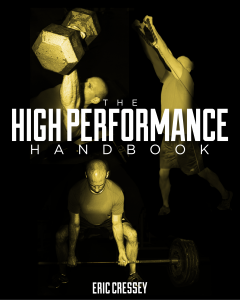
Exercise of the Week: 1-arm Bottoms-up Kettlebell Waiter’s Walk
In this installment of “Exercise of the Week,” I want to introduce you to another great carrying variation you can use to accomplish a number of different objectives. The 1-arm Bottoms-up Kettlebell Waiter’s Walk is one of my personal favorites, and we use it a lot with not only our baseball guys, but also many of our non-baseball clientele.
Those of you who have followed my “Exercise of the Week” series probably notice that this is a progression on a previous drill I introduced, the 1-arm Bottoms-up KB Carry. To bring you up to speed on the “why” behind this kettlebell exercise, here are a few reasons it’s a great one:
1. It gets great reflexive rotator cuff activation in light of the bottoms-up position and the subtle perturbations to stability as the individual walks.
2. It teaches an athlete to fully upwardly rotate the scapula (shoulder blade) correctly, which helps us to build stability in an overhead position and solidify the mobility we have. This is wildly important for overhead throwing athletes, too, as they always lose upward rotation over the course of the competitive season.
3. It creates a challenge to both lateral/rotary and anterior core function. The individual has to work to prevent excessive lower back arching, as well as side bending. Being able to get these challenges while still working the shoulder girdle ensures that you get great functional carryover to the real world.
4. Without even knowing it, you’re also getting a pretty good grip workout simply from holding the slightly thicker handle of the kettlebell.
In addition to the coaching cues I discuss in the video above, one “outcome” measure for which you’ll want to look is the amount of scapular upward rotation present. You can do that by drawing a line along the medial (inside border) of the scapula, and then checking what angle it creates with a vertical line along the spine. Your goal is about 55-60 degrees of scapular upward rotation.
In a good overhead position, you shouldn’t feel it at all in the top or front of your shoulder. If you do, though, it’s a sign that you’re probably either lacking scapular upward rotation or don’t have sufficient cuff strength to do this correctly. I always tell athletes that they shouldn’t “feel” this in one place; it should feel like the entire shoulder girdle is working synergistically to create good stabilization.
Also, a lot of people will ask if they need to “pack the shoulder down with the lat.” Why you would want to turn your lat on to reach overhead is a puzzle to me, as it limits shoulder flexion and scapular upward rotation, draws the humerus into internal rotation (closes down the subacromial space), and pulls the spine into an extended position (excessive arching). What folks really should be doing is a subtly posterior tilting the scapula to free up space at the front of the shoulder, and facilitate upward rotation. It’s a flawed movement if you’re just cranking the entire shoulder girdle down. In short, we want lower traps, not lats.
If you’re looking to learn more about how I incorporate many different carrying variations in my programming, I’d encourage you to check out my new resource, The High Performance Handbook.




